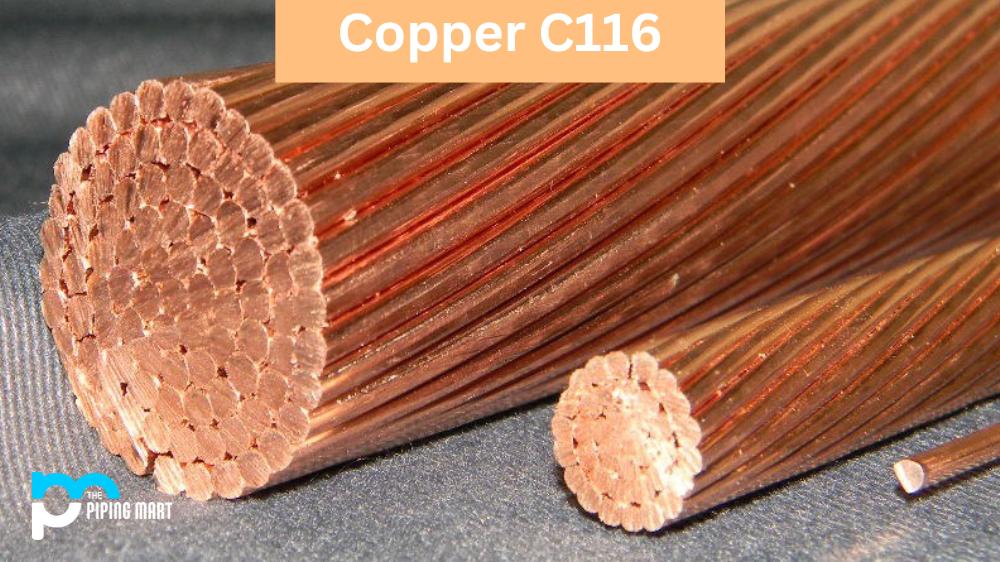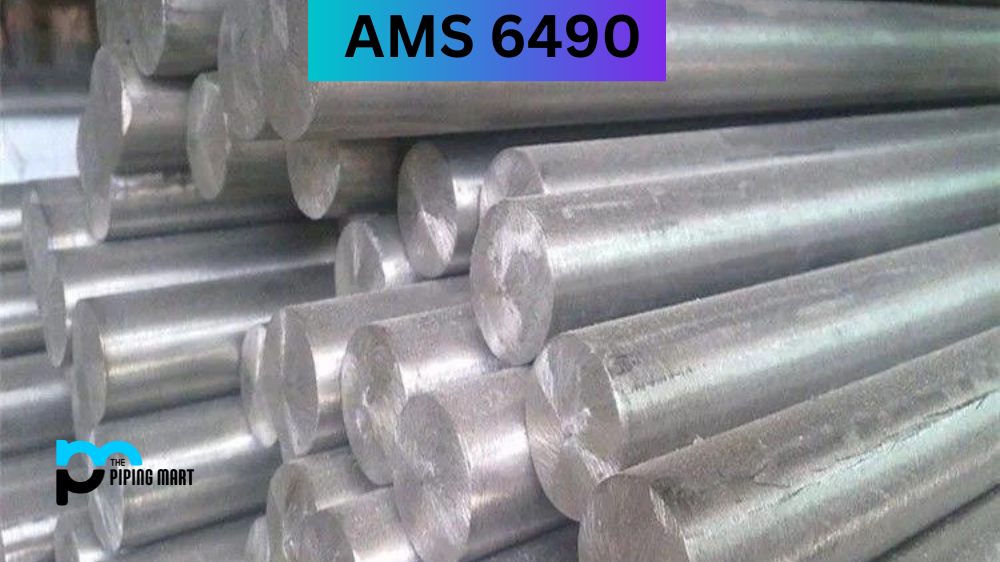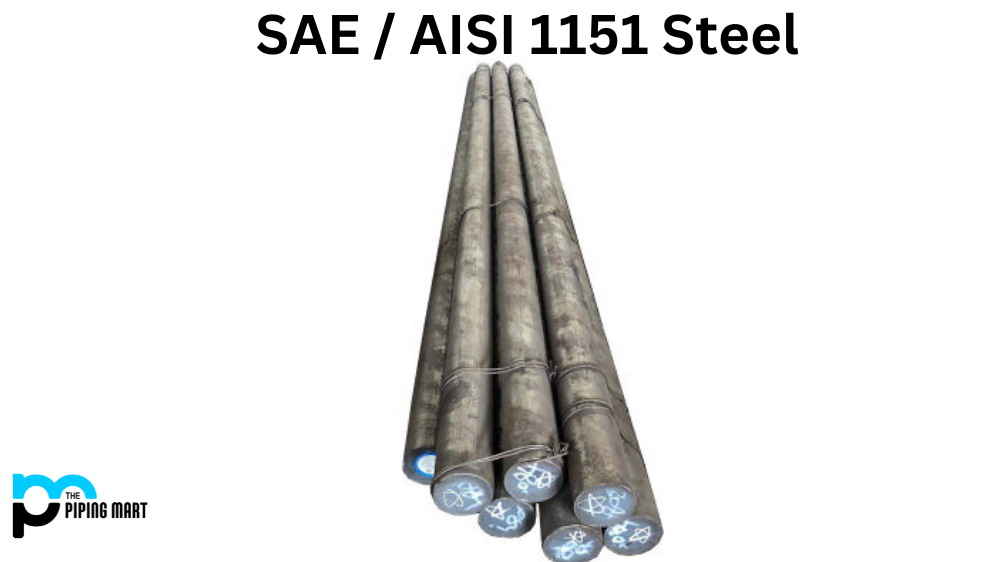Copper C116 (also known as UNS C11600) is a high-strength, corrosion-resistant copper alloy. It’s used in a variety of applications, including automotive, chemical processing, and more. But what makes Copper C116 so special? Let’s take a look at the composition and properties that make it unique.
C116 Copper Composition
C11600 has a nominal composition of 96% copper, 3% zinc, 1.3% silicon, and 0.7% manganese by weight. This combination gives it excellent strength and machinability, along with excellent electrical conductivity and thermal conductivity. It also offers superior corrosion resistance even in harsh environments like salt water or acid solutions.
| Nominal | Minimum | Maxiumum | |
|---|---|---|---|
| Copper + Silver | — | 99.90 | — |
| Silver | — | 25oz./ton* | — |
| Oxygen | .04 | — | — |
C116 Copper Chemical Properties
C11600 has unique chemical properties that make it incredibly advantageous for a wide variety of applications. This alloy is highly malleable and ductile, making it an excellent conductor of electricity, which makes it popular for use in wiring and circuit boards. It also has superior corrosion resistance, even when exposed to extreme temperatures and air pressure. Additionally, its tensile strength makes it ideal for food-grade containers and utensils since it won’t easily bend or break. Finally, unlike other metals like aluminium and iron, copper C116 is largely unmoved by ionizing radiation except under high-density exposure. Taking advantage of the extraordinary chemical properties of copper C116 provides immense potential in various industries with its unparalleled performance that is both reliable and sustainable.
C116 Copper Mechanical Properties
C11600 is one of the most robust metals around, which makes it an ideal choice for a wide range of applications. It is especially valuable because it has excellent formability, high stress-rupture strength, good conductivity, exceptional weldability and superior corrosion resistance. Its mechanical properties make it suitable for fastener applications such as screws, nuts and bolts. Copper C116 is often used in heavy-duty equipment such as marine engines, also in automotive parts like disc brakes and metallic couplings. In addition to its broad scope of use in industry, copper C116 is also suitable for decorative items like jewellery and giftware due to its beauty and impeccable durability. The versatility of this metal further adds to its appeal among manufacturers across the world.
| Temper | Thickness | Tensile Str. | Yield Str. | Elong. | Rockwell | Shear Str. | |||
|---|---|---|---|---|---|---|---|---|---|
| B | C | F | 30T | ||||||
| OS025 | 1.65mm (0.065in) | 234MPa (34ksi) | 76MPa (11ksi) | 45% | – | – | 45 | – | 159MPa (23ksi) |
| OS050 | 1.65mm (0.065in) | 221MPa (32ksi) | 69MPa (10ksi) | 45% | – | – | 40 | – | 152MPa (22ksi) |
C116 Copper Physical Properties
C11600 is a popular choice among physical scientists due to its superior energy efficiency and resistance to wear and tear. Its high thermal conductivity makes it ideal for applications requiring rapid heat dissipation, making it especially suitable for cooling systems. Its yield strength and elongation are extremely reliable and consistent in the application, meaning that consistent results will be achieved every time. In addition, it has excellent toughness – the ability to absorb shock or sudden impacts of greater force than other materials. This makes Copper C116 an optimal choice for uses involving bearings, gaskets, and flexible seals that are prone to shock or vibration. Overall, this material demonstrates an impressive range of outstanding physical properties making it a top pick for numerous scientific projects.
| English Units | C.G.S. Units | |
|---|---|---|
| Melting Point (Liquidus) | 1,980°F | 1,082°C |
| Melting Point (Solidus) | ||
| Density | .321-.323 lb./cu. in. @ 68°F | 8.89-8.94 gm./cu. cm. @ 20°C |
| Specific Gravity | 8.89-8.94 | 8.89-8.94 |
| Coefficient of Thermal Expansion | .0000098 per °F from 68°F to 572°F | .0000177 per °C from 20°C to 300°C |
| Thermal Conductivity | 224 Btu./sq. ft./ft./hr./°F @ 68°F | .927 cal /sq. cm /cm /seC /°C @ 20°C |
| Electrical Resistivity (Annealed) | 10.4 Ohms (cirC mil./ft.) @ 68°F | 1.72 Microhm-cm @ 20°C |
| Electrical Conductivity* (Annealed) | 100% IACS @ 68°F | .580 Megohm-cm @ 20°C |
| Thermal Capacity (Specific Heat) | .092 Btu./lb./°F @ 68°F | .092 cal /gm./°C @ 20°C |
| Modulus of Elasticity (Tension) | 17,000,000 psi | 12,000 Kg./sq. mm. |
| Modulus of Rigidity | 6,400,000 psi | 4,500 Kg./sq. mm. |
C116 Copper Thermal Properties
| Properties | Metric | Imperial |
|---|---|---|
| Thermal expansion co-efficient (at 20-300°C/68-572°F) | 20.2 µm/m°C | 11.2 µin/in°F |
| Thermal conductivity | 26 W/mK | 180 BTU in/hr.ft².°F |
C116 Copper Machinability
| Copper Alloy UNS No. | Machinability Rating | Density (lb/in3 at 68 °F) |
|---|---|---|
| C69400 | 30 | 0.296 |
C116 Copper Equivalent
| CDA | ASTM | SAE | AMS | Federal | Military | Other |
|---|---|---|---|---|---|---|
| C69400 | B371 B371M |
C116 Copper Uses
C11600 has a variety of uses in the industrial and commercial worlds, from its use as a structural material in buildings to simpler chores such as electrical wiring. The strength and malleability of copper C116 make it an ideal choice for construction projects large and small – from high-rises to residential decking. On the other hand, the electrical conductivity of this metal is also invaluable when you require sturdy, safe wiring for your projects. These qualities of the metal make it a popular choice amongst engineers, contractors, and DIYers alike.
Heat Resistance
In addition to its other desirable properties, Copper C116 also offers excellent heat resistance. It can be heated up to 815°C without experiencing any significant degradation or loss of strength or ductility.
Heat Treatment
It can also be hardened through age-hardening processes in which it is heated for long periods at temperatures around 450°C–550°C followed by rapid cooling. This allows it to be customized for specific applications where higher strength is required without sacrificing its other desirable qualities.
Machining
When it comes to machining and welding, Copper C115 proves to be an exceptionally versatile material that can easily be cut, drilled, tapped, milled or turned with standard tooling techniques using conventional tools like carbide inserts or diamond-tipped tools depending on the application requirements.
Welding
For welding, it can easily be welded using either gas tungsten arc welding (GTAW) or shielded metal arc welding (SMAW) processes with no preheating required as long as the correct filler metals are used and proper shielding gases are employed throughout the process.
Conclusion
Copper C116 is an impressive material that offers a wide range of desirable qualities such as great strength and excellent corrosion resistance along with good electrical conductivity and thermal conductivity making it perfect for many different types of applications from automotive components to chemical processing equipment and more. Its exceptional heat resistance also makes it ideal for use in high-temperature environments, while its ability to be hardened through age-hardening processes makes it customizable for specific applications where higher strength is required without sacrificing its other desirable qualities. Finally its easy machinability and weldability make it simple to work with when creating custom parts or components for various projects or applications requiring copper alloys as their main component material. All in all, this makes copper c 116 one of the most versatile materials available today.
Sakshee is a talented blogger, with a particular focus on the Business and Metal Industry. She is passionate about sharing her insights on various metal products and helping professionals to make a better decisions.




